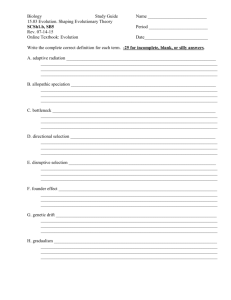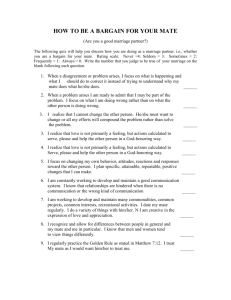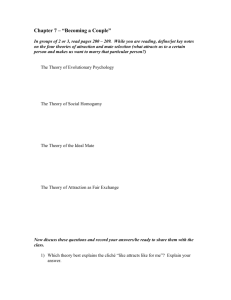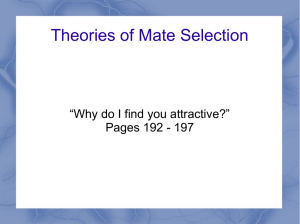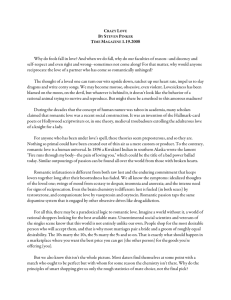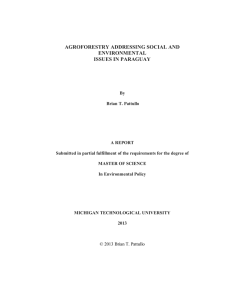dialog 2
advertisement
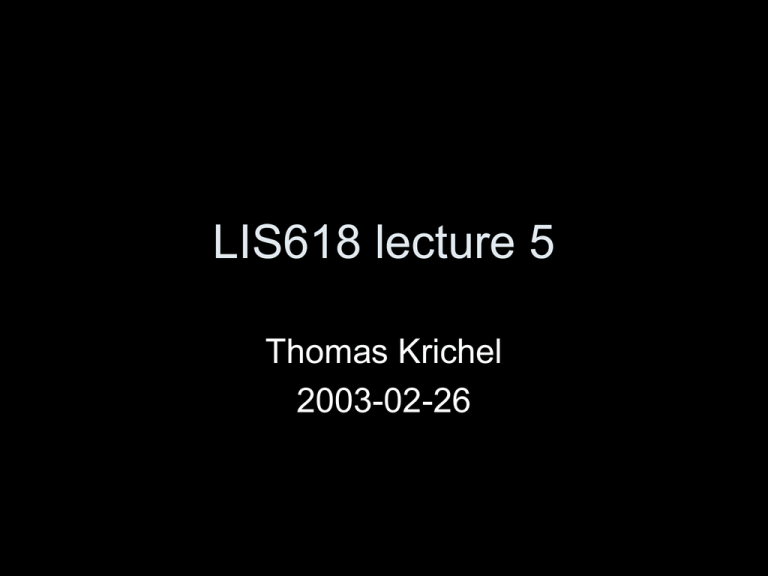
LIS618 lecture 5 Thomas Krichel 2003-02-26 structure • operations on any file (database) – connectors – booleans – set handling – display • file-specifics – bluesheet – Introduction to structured queries Use of connectors • Connectors are used to put several words together. • One instance where this is useful is when you have words that on their own mean different things. • For example "mate" is a herbal beverage consumed in South America. Looking for mate on the Internet retrieves a lot of singles' pages. example: terms related to "mate" What other terms to be used? – matear – matero – cebar – cebador – yerba – bombilla (drink mate) (mate drinker) (prepare mate) (mate preparer) (mate herb) (mate straw) connectors I • '(W)' requires terms to appear one after the other next to each other e.g. 'yerba(W)mate?' matches "yerba mate". • '(i W)' where i is an integer, means followed by at most i words, e.g. 'ceba?(3W)mate?' matches "cebar un maravilloso mate" but not "cebador guapo mirando un buen mate" connectors II • '(N)' requires terms to be next to each other e.g. 'yerba(N)mate?' matches "yerba mate" or "mate yerba". • '(i N)' where i is an integer, means proximity by at most i words, e.g. 'ceba?(3N)mate?' matches "cebar mate" or "matear con la cebadora". • '(S)' searches for the occurrence of connected terms in the same paragraph. using Boolean operators • In your query, you can combine several expressions with Boolean operators • Example: "S LIBRARY(W)SCHOOL? AND DISTANCE(W)EDUCATION" • But I usually do not issue such fancy queries. executing several searches • there can be several searches done sequentially, and the results sets are saved by the system. • Each time the system assigns a set number, Si, • These can be combined in Boolean expressions, e.g. 's S1 or S2 and S3' • Remember that Boolean operations are set-theoretic! Boolean operators on sets • when using Booleans, be aware that "and" has higher precedence than "or". • Thus: a or b and c is not the same as (a or b) and c but it is a or (b and c) • use parenthesis when in doubt DS (display sets) • This command can be executed any time to review the sets that have been formed since the last B (begin) command. • This can be useful to review your search history. the target command • "target set" where set is a search result set creates a subset of the "statistically most relevant results" in the original set. • I have not seen details about how this subset is computed. • new result set is being formed. display: the type command type set/format/range • set is a result set • format is a format • range can be – start – end • start is a record number to start • end is a record number to end – all standard delivery formats • • • • • 2 -- full record except abstract 3 or medium – citation 5 or long – full except full text 6 or free – title and dialog number 8 or short – title plus indexing terms – useful to find other indexing terms • 9 or full – everything • KWIC or K – keywords in context options for delivery • I once tried to email results to me, to no avail • You can save the html of the search results in the browser. • You can print the results within the browser. Looking at database structure • Up until now, we have looked at commands that take a full-text view of the database. • Such commands can be executed for every database. • If we want to make more precise queries, we have to take account of database structure. blue sheet • each database name is linked to a blueish pop-up window called the blue sheet for the database • This is called the bluesheet. • It contains the details of the database. closer look at the bluesheet • file description • subject coverage (free vocabulary) • format options, lists all formats – by number (internal) – by dialog web format (external, i.e. crossdatabase) • search options – basic index, i.e. subject contents – additional index, i.e. non-subject basic vs additional index • the basic index – has information that is relevant to the substantive contents of the data – usually is indexed by word, i.e. connectors are required • the additional index – has data that is not relevant to the substantive matter – usually indexed by phrase, i.e. connectors are not required search options: basic index • select without qualifiers searches in all fields in the basic index • bluesheet lists field indicators available for a database • also note if field is indexed by word or phrase. proximity searching only works with word indices. when phrases are indexed you don't need proximity indicators http://openlib.org/home/krichel Thank you for your attention!
